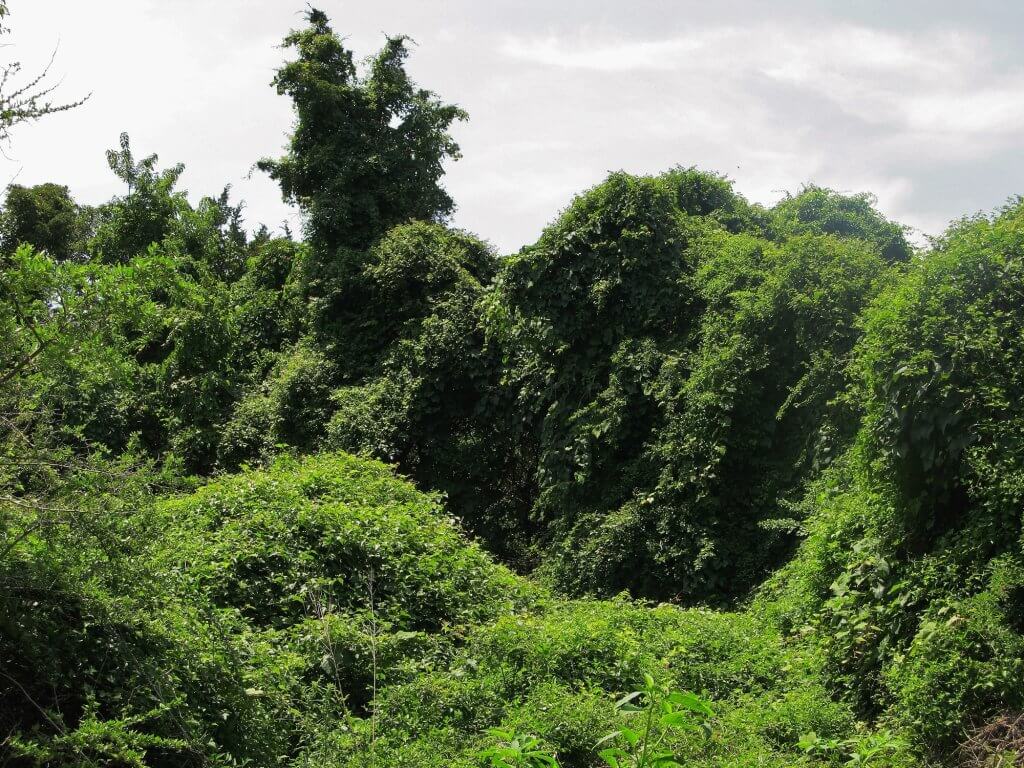CAPE MAY – Cape May County, along with much of New Jersey, the United States, and the world, is fighting a long and difficult war: the battle against invasive plants. For decades, non-native invasive plants have been traveling back and forth between different states, countries, and continents. In some cases, these alien invaders may hitch a ride to new places by being tucked away in shipping containers and transported goods, or they may be stuck to vehicles and equipment. Many are even brought here intentionally and are often planted for landscaping, livestock forage, and erosion control. Once they take root, however, invasive plants can overstay their welcome, and spread quickly throughout entire landscapes. It’s these alien invaders that are the target of the Cape May Habitat Restoration Task Force (the Task Force), a partnership organized and coordinated by New Jersey Audubon.
Invasive plants have the potential to cause a great deal of harm to the environment, the economy, and sometimes even public health. A widely accepted study estimates that $120 billion are spent annually on invasive species control in the United States (Pimentel 2005). Certain invasive plants, such as giant hogweed (Heracleum mantegazzianum) and Japanese hop (Humulus japonicus), can even cause painful blisters and burns when handled. Additionally, according to the New Jersey Wildlife Action Plan, invasive species pose the second biggest threat to wildlife habitat, second only to actual habitat destruction.
While it is clear invasive plants pose numerous problems, the environmental threat is the target for the Task Force. Invasive plants have been taking over natural areas in Cape May County, with over 420 species already detected. These aggressive plants pose a threat to native habitats because they grow quickly, have relatively long growing seasons, and can even change the soil chemistry to prevent other plants from growing. Once these plants take root, the end result is often a monoculture of invasive plants, which provides far less resources than native plant communities that support Cape May County’s rich diversity of birds, butterflies, insects, reptiles, amphibians, and mammals.
These plants take away nesting sites for a wide variety of birds that spend the spring and summer raising their young here; they take away the variety in berries required to feed the mass bird migration that occurs here in the spring and fall; and they can cause a shift and collapse in the food web by eliminating food sources for plant-eating insects, such as the iconic monarch caterpillars (Danaus plexippus).
Plants are some of the only organisms on earth that convert sunlight into food and plant tissue. Plant-eating insects, such as the caterpillar stage of butterflies and moths, then eat that plant material and convert it into protein-rich animal tissue, which provides valuable food to many birds, reptiles, amphibians, and mammals. While invasive plants do convert sunlight into plant tissue, native and beneficial plant-eating insects commonly do not recognize invasive plants as food and therefore pass on eating the alien species. By reducing the availability of native plant communities, invasive plants can subsequently reduce the abundance of plant-eating insects and eventually reduce the abundance of insect-eating animals. Doug Tallamy, author of Bringing Nature Home: How You Can Sustain Wildlife with Native Plants and professor at the University of Delaware, explains:
“I cannot overemphasize how important insect herbivores are to the health of all terrestrial ecosystems. Worldwide, 37 percent of animal species are herbivorous insects (Weiss & Berenbaum 1988). These species are collectively very good at converting plant tissue of all types to insect tissue, and as a consequence they also excel at providing food—in the form of themselves – for other species. In fact, a large percentage of the world’s fauna depends entirely on insects to access the energy stored in plants (Wilson 1987). Birds are a particularly good example of such insect-eating organisms. If you count all of the terrestrial bird species in North America that rely on insects and other arthropods (typically the spiders that eat insects) to feed their young you would find that figure to be about 96 percent (Dickinson 1999) – in other words, nearly all of them.” (Tallamy 2009)
Although this can seem like an overwhelming dilemma, there are ways you can help: Be sure to use native plants in your gardens and landscaping; volunteer at a local restoration site; attend one of the Task Force meetings or workshops; learn to identify, monitor, and control invasive plants; and stay tuned for weekly invasive plant spotlights! For more information, please like our Facebook page Cape May Habitat Restoration Task Force, visit www.njaudubon.org, or contact Kristen Meistrell at kristen.meistrell@njaudubon.org. For additional information on invasive species and native plants, be sure to check out www.njisst.organd www.jerseyyards.org







